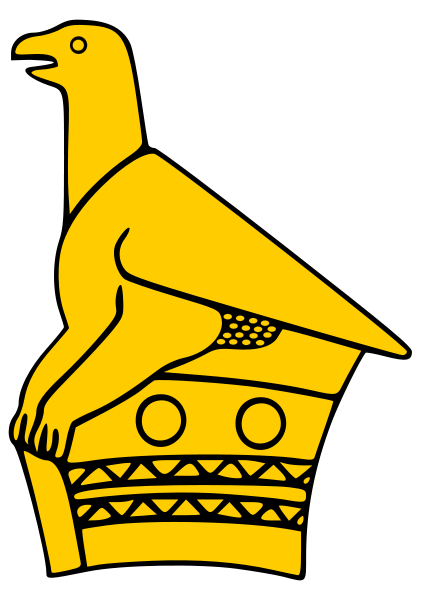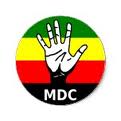Pioneer Days
Let's talk about land.
Jameson had no real authority to grant land rights to anyone and had been warned by the High Commissioner at the Cape, Sir Henry Loch, against doing so. Thus Jameson made all his decisions "provisionally". His biographer, Colvin writes "Jameson found 'provisional' a blessed word … He did all things provisionally – rewarding his followers with 'provisional' farms and laying out three miles to the south of the royal kraal the 'provisional' site of the 'provisional' town of Bulawayo." Men carved out their 3000 morgen farms in the Matabele heartland to the extent that the 1894 Land Commission reported that "The un-allotted lands between these grants are small in extent and cannot be accurately ascertained." Thus the Commission recommended that "Reserves" for the Matabele could only be created to the north and north-east of the modern town of Bulawayo, and when accepting the report, the High Commissioner who commented that the smaller area allocated to the Matabele was suitable because their numbers were much reduced by desertions by their Shona "vassals". This was a only a paper proposal, however, and was not implemented before 1896. Cobbing (1976: 372) claims, "although in the end the seizure of land was to prove the most dramatic, during 1894-6 it affected the Ndebele only slightly; most of the land was not at this stage worked, and the bulk of the Ndebele who remained in situ were often unaware that ownership had changed". Land was given not only as a reward to the participants in the invasion but also to give important sections of both Cape and English society a stake in the new territory. Additional land was appropriated around the isolated settlements (that were attacked in 1896) which had sprung up next to the majority of the 60,000 registered gold claims in Matabeleland and the Midlands.
What about the cattle?
Almost immediately after occupation on Matabeleland, the BSA Co began rounding up the cattle found in the area. At first the Company accepted the distinction between private and royal cattle. Rhodes wrote to Loch: "the natives readily recognise that they have in charge a large number of cattle which they consider the King's cattle, these are totally apart from those which are their own private property … but the whole matter is one for careful investigation as to what are the King's and what are the people's" (quoted in Cobbing 1976: 158). Section 49 of the Matabeleland Order in Council of June 1894 only required that the Matabele be left with enough cattle to provide their immediate families with milk. The early correspondence and administrative files for the BSA Co are filled with accounts of cattle taking and by mid-1894, almost 100,000 Matabele cattle had been taken. (Quoting local soldier, guide and interpreter Jack Carruthers, Neville Jones (1953) claims "The loot committee eventually accounted for three hundred and sixty two thousand head of cattle". This is likely an exaggeration. Ranger (1967) claims the Matabele had in the region of 200,000 head.) The appropriated cattle were branded with the Company brand (C.C.) and were either sold at auction or given into the temporary care of local people. Other whites defied BSA Co edicts and took cattle for themselves or moved them across the border into Mashonaland, the Tati area or South Africa. Faced with a desperate need for cash to pay its volunteer soldiers (see Stigger 1971 for an excellent discussion of the mercenary impulses and profit motives that governed the participation of many of the invading forces), the Company eventually declared all cattle as its property, at the same time, fabricating the useful fiction that since the cattle had belonged solely to the Matabele King, Lobengula, the cattle passed on to the BSAC by "right of conquest". The deception worked. When being questioned whether these large-scale cattle seizures were legitimate, Loch told the British government that "cattle taken by [the] British South Africa Company are … the King's, not the people's, and their capture is the best evidence to the Matabele that he has been beaten, as they are a symbol of a Chief's authority" (Quoted in Stigger 1980: 31).
But who really owned the cattle?
British Secretary of State Ripon would not be misled. He knew from experience in other southern African frontier wars that a distinction between a King's cattle and those of his people was fallacious and told Loch that in order to secure "ample cattle for [Matabele] requirements… it is necessary that sufficient cattle should be held in trust, out of any that may have been seized from whatever source" (quoted in Stigger 1980: 31). Led by Jameson, the BSA Co prevaricated and continued with their seizures. Matabele cattle ownership was a complicated affair but it must be stressed that the King did not own all cattle in the country. Lobengula did have his own private beasts but there were two distinct types of cattle ownership in pre-colonial Matabeleland: One involving full ownership, the other involving extensive rights falling short of ownership in the modern sense. The niceties of cattle use and sharing was labyrinthine to the European mind and may help explain some of the confusion but cannot excuse the naked looting of private property conducted by the BSA Co, its agents and private persons between 1893-96. Nevertheless, as Cobbing (1976: 159) succinctly states, "private cattle ownership among the Ndebele was ubiquitous" (each owner had a distinctive ear mark (uphawu); the king's private cattle had the tips of both ears cut off.)
Why would these seizures have mattered?
As should be well-known, cattle were (and are) of utmost importance to the Matabele. They symbolised wealth, enjoyed vast spiritual significance and formed the keystone of the barter economy and labour relations in Matabele society. In fact a person's whole life was tied up with the ideology associated with cattle although the Matabele were also keen farmers, growing a variety of crops. The wholesale seizure and looting of their cattle by the whites and their Shona vassals after 1893 generated considerable resentment. In part it was seen as a direct assault on their way of life and culture and thus had to be countered. An agreement was struck in 1895 whereby the Matabele kept 40,930 of the 74,500 cattle in private hands by that year, the rest going to auction or food. Additional resentment was generated by the manner in which the beasts were allocated since only those indunas who showed "loyalty" to the Administration got cattle. Thus there was the suspicion that the share-outs would only be for reward and not to help the Matabele nation in general. Things were made worse when disease struck down their herds.
Sourced from the Zanj Financial Network 'Zfn', Harare, Zimbabwe, email briefing dated 14 March 2011


 South Devon Sound Radio
South Devon Sound Radio Museum of hp Calculators
Museum of hp Calculators Apollo Flight Journal
Apollo Flight Journal Apollo Lunar Surface Journal
Apollo Lunar Surface Journal Cloudy Nights Classic Telescopes
Cloudy Nights Classic Telescopes The Savanna - Saffer Shops in London
The Savanna - Saffer Shops in London Linux Mint
Linux Mint Movement for Democratic Change
Movement for Democratic Change